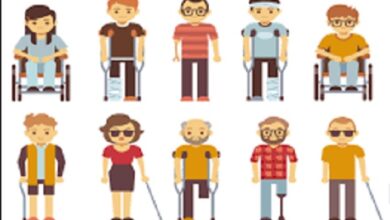Acoustic dysgraphia reasons classification Diagnostics correction
Acoustic dysgraphia
Acoustic dysgraphia is a partial disorder of the writing function due to a lack of auditory perception. It appears by replacing or mixing letters in writing, denoting phonetically similar sounds: hissing-whistling, hard-soft, voiced-deaf, affricates, and their components. At the same time, the child’s sound pronunciation is correct. Dysgraphia is diagnosed based on the results of the analysis of written works, the study of the auditory differentiation of phonemes. The correction route provides for overcoming phonemic underdevelopment, clarifying the acoustic characteristics of sounds, working on phonemic analysis and synthesis.
General information about Acoustic dysgraphia
Acoustic dysgraphia, as a specific writing disorder associated with a deficiency of the speech and auditory analyzer, was identified in 1971 by the classic Soviet speech therapy O.A. Tokareva. In the 1980s. Professor R.I. Lalaeva proposed her own classification, in which she designated acoustic dysgraphia with the term “dysgraphia due to violation of phonemic recognition.” According to published studies, mistakes in writing due to unformed phonemic processes occur in 10% of primary school children.
Symptoms of Acoustic Dysgraphia
The manifestations of dysgraphia based on impaired phonemic recognition become noticeable in primary school, but the prerequisites can be found even in preschool childhood. Children confuse the sounds of speech, pronounce words indistinctly, memorize poetry and songs with difficulty. They have reduced efficiency and concentration, there is a frequent switchover of attention.
In writing, schoolchildren with acoustic dysgraphia allow substitutions and mixing of letters that are phonetically close:
- voiceless and voiced consonants (“crust” – a slide);
- soft and hard consonants (“letter” – letter);
- sibilant and sibilant (“fluffy” – fluffy);
- sonorous (“singing” – pass);
- affricate and their constituent components (“often” – often);
- labialized (labial) vowels (“grandmother” – a butterfly).
Also, omissions and permutations of letters in words are noted, the erroneous designation of the softness of consonants with a soft sign or iotated vowels (“zelny” or “zelion” – green). In severe forms of dysgraphia, phonemes are mixed, which denote sounds dissimilar in their acoustic characteristics. In this case, sound production is usually not impaired, but sometimes the child has imprecise speech kinesthesia.
Classification of Acoustic dysgraphia
Depending on what kind of phonemic recognition operation is violated in the process of writing, the following subspecies of acoustic dysgraphia are distinguished in speech therapy:
- acoustic – inaccurate auditory differentiation of sounds and their analysis occurs;
- kinesthetic – difficulties in phonemic recognition are associated with insufficient kinesthetic control of the writing process;
- phonemic – the student makes the wrong decision about the choice of a particular phoneme.
The reasons for Acoustic dysgraphia
Acoustic dysgraphia occurs due to insufficient formation of phonemic perception at the beginning of school education of the child. As a result of nondiscrimination of speech sounds by ear, inability for sound analysis and synthesis in writing, the student makes the wrong decision about correlating a phoneme with a grapheme (“writes as he hears”). Incorrect phonemic recognition is inherent in children with functional dyslalia, sensory alalia, erased dysarthria, and adults with acoustic-gnostic aphasia.
Risk factors of Acoustic dysgraphia
Examination of children with acoustic dysgraphia reveals a number of social and biological factors that can be considered as predisposing. Among them:
- illegibility, the slurred speech of the child;
- the presence in the oral speech of sound substitutions, voicing, and softening defects ;
- blurred diction of surrounding adults;
- lack of speech contacts;
- bilingualism ;
- unreasonably early teaching to read and write (unformed psychological and linguistic prerequisites);
- burdened medical history (birth trauma, birth asphyxia, head injury, child soreness), leading to minimal dysfunction of the central nervous system.
Pathogenesis of Acoustic dysgraphia
Well-developed auditory-pronunciation differentiation and phonemic perception are indispensable conditions for mastering literacy: reading and writing. Spontaneous phonemic development is completed normally by 5-6 years. The child can hear and distinguish individual sounds in a word, determine their place and sequence. On this basis, in the future, it becomes possible to master the skill of writing.
The incompleteness of the processes of phonemic recognition by the beginning of schooling, even in the absence of sound-pronunciation defects, is accompanied by difficulties in mastering written speech, creates the preconditions for the development of acoustic dysgraphia. During the writing operation, the child cannot perform an auditory analysis of the word, highlight the acoustic features of a phoneme, translate it into a kinesthetic image (reliance on pronunciation), or make a decision to compare the phoneme with the corresponding grapheme. If at the same time motor, optical, regulatory functions are also impaired, then mixed dysgraphia develops. Acoustic dysgraphia reasons and classification
Diagnostics of Acoustic dysgraphia
Usually, parents or a teacher turn to a speech therapist with complaints about persistent mistakes of the same type that the child makes in writing. In the course of analyzing workbooks, a specialist notices problems typical for acoustic dysgraphia: substitution/mixing of letters by phonetic similarity, rearrangements, and missing letters. To confirm the diagnostic hypothesis, the speech therapist conducts an examination of oral speech :
- Assessment of sound pronunciation. Students with acoustic dysgraphia pronounce sounds correctly, but they may have fuzzy diction, inaccurate switching of articulatory poses. There are no anatomical defects in the speech apparatus.
- Study of phonemic processes. To a greater extent, auditory differentiation, analysis, and synthesis operations, ideas about the acoustic properties of phonemes turn out to be unformed. The child is not able to correctly repeat syllable chains with opposition sounds, select pictures with the desired sound, determine the place of sound in a word, show objects denoted by paronyms.
- Examination of other aspects of speech. The state of the syllable structure of the word, lexical and grammatical categories of speech is checked. The reading function is examined: children with acoustic dysgraphia, as a rule, have phonemic dyslexia.
From the methods of medical diagnostics, audiometry can be recommended, since, with deficiencies in phonemic recognition, it is always necessary to exclude hearing loss. Instrumental neurological examination, if indicated, includes electroencephalography, ultrasound of the neck vessels, cerebral CT, or MRI.
Correction of acoustic dysgraphia
The correction route for dysgraphia caused by immature phonemic recognition is built taking into account the disturbing speech links. During the lessons, the following tasks are solved:
- formation of phonemic perception;
- clarification of acoustic and pronunciation characteristics of sounds, their differentiation;
- mastering sound-letter analysis and synthesis;
- correlating a phoneme with its graphical equivalent – a grapheme.
The work on sounds is carried out in the following sequence: first, the articulatory and acoustic aspects of vowels are clarified, then consonants (sibilant, hissing, affricate, sonors), then opposition sounds (soft/hard, voiced / voiceless). Only after that do they move on to independent writing – copying texts, writing auditory dictations, essays, statements.
In addition to improving speech functions, they are working on the development of HMF – memory, thinking, attention. It is useful to include elements of phonetic and speech therapy rhythmics, motor-speech physical minutes in the structure of classes. Interest in classes increases the use of interactive games, ICT. A


